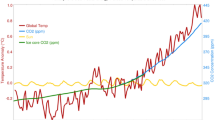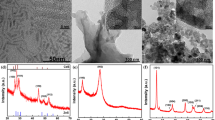Abstract
Hydrogen gas production generated from carbon-free molecules while utilizing solar energy provided a pathway for zero carbon emission energy. In photocatalytic hydrogen gas production, alcohol and oxygenated compounds as sacrificial agents are often added to accelerate the water splitting process while simultaneously decomposing to form H2 and CO2. However, the generation of CO2 requires an additional measure to curb carbon from being released into the atmosphere. This study evaluated the performance of TiO2 photocatalysts to generate hydrogen from NH3 solution as carbon-free molecules. The investigation is extended to alkylamines compounds as sacrificial agents. H2 is linearly produced from NH3 when using Pd/TiO2; however, the rate is reduced after a prolonged photocatalytic reaction. Alkylamines molecules are more susceptible for H2 production than NH3, with the reactivity increased from NH3 < triethylamine < diethylamine < ethylamine. Comparative analysis was also conducted on the amount of H2 and CO2 gases released from alkylamines and alcohols to indicate nitrogen-containing compounds viability as sacrificial agents for carbon-emission free sacrificial agents in photocatalytic water splitting reaction.
Graphical Abstract













Similar content being viewed by others
References
Bahruji H, Bowker M, Hutchings G, Dimitratos N, Wells P, Gibson E et al (2016) Pd/ZnO catalysts for direct CO2 hydrogenation to methanol. J Catal 343:133–146
Aziz M, Oda T, Morihara A, Kashiwagi T (2017) Combined nitrogen production, ammonia synthesis, and power generation for efficient hydrogen storage. Energy Procedia 143:674–679
Singh AK, Singh S, Kumar A (2016) Hydrogen energy future with formic acid: a renewable chemical hydrogen storage system. Catal Sci Technol 6(1):12–40
Kennedy J, Bahruji H, Bowker M, Davies PR, Bouleghlimat E, Issarapanacheewin S (2018) Hydrogen generation by photocatalytic reforming of potential biofuels: polyols, cyclic alcohols, and saccharides. J Photochem Photobiol, A 356:451–456
Bahruji H, Bowker M, Davies PR, Pedrono F (2011) New insights into the mechanism of photocatalytic reforming on Pd/TiO2. Appl Catal B 107(1):205–209
Guo J, Chen P (2017) Catalyst: NH3 as an energy carrier. Chem 3(5):709–712
Hill AK, Torrente-Murciano L (2015) Low temperature H2 production from ammonia using ruthenium-based catalysts: Synergetic effect of promoter and support. Appl Catal B 172–173:129–135
Hattori M, Iijima S, Nakao T, Hosono H, Hara M (2020) Solid solution for catalytic ammonia synthesis from nitrogen and hydrogen gases at 50 °C. Nat Commun 11(1):2001
Mukherjee S, Devaguptapu SV, Sviripa A, Lund CRF, Wu G (2018) Low-temperature ammonia decomposition catalysts for hydrogen generation. Appl Catal B 226:162–181
Choudhary TV, Sivadinarayana C, Goodman DW (2001) Catalytic ammonia decomposition: COx-free hydrogen production for fuel cell applications. Catal Lett 72(3):197–201
Wang L, Yi Y, Zhao Y, Zhang R, Zhang J, Guo H (2015) NH3 Decomposition for H2 generation: effects of cheap metals and supports on plasma-catalyst synergy. ACS Catal 5(7):4167–4174
Obata K, Kishishita K, Okemoto A, Taniya K, Ichihashi Y, Nishiyama S (2014) Photocatalytic decomposition of NH3 over TiO2 catalysts doped with Fe. Appl Catal B 160–161:200–203
Shiraishi Y, Toi S, Ichikawa S, Hirai T (2020) Photocatalytic NH3 splitting on TiO2 particles decorated with Pt–Au bimetallic alloy nanoparticles. ACS Appl Nano Mater 3(2):1612–1620
Lee J, Park H, Choi W (2002) Selective photocatalytic oxidation of NH3 to N2 on platinized TiO2 in water. Environ Sci Technol 36(24):5462–5468
Lee J, Choi W (2004) Effect of platinum deposits on TiO2 on the anoxic photocatalytic degradation pathways of alkylamines in water: dealkylation and N-Alkylation. Environ Sci Technol 38(14):4026–4033
Matsushita Y, Ohba N, Suzuki T, Ichimura T (2008) N-Alkylation of amines by photocatalytic reaction in a microreaction system. Catal Today 132(1–4):153–158
Kim S, Choi W (2002) Kinetics and mechanisms of photocatalytic degradation of (CH3)nNH4-n+ (0 ≤ n ≤ 4) in TiO2 suspension: the role of OH radicals. Environ Sci Technol 36(9):2019–2025
Benkhaya S, M’Rabet S, El Harfi A (2020) Classifications, properties, recent synthesis and applications of azo dyes. Heliyon 6(1):e03271
Liao L-F, Wu W-C, Chuang C-C, Lin J-L (2001) FTIR study of adsorption and reactions of methylamine on powdered TiO2. J Phys Chem B 105(25):5928–5934
Kachina A, Preis S, Lluellas GC, Kallas J (2007) Gas-phase and aqueous photocatalytic oxidation of methylamine: the reaction pathways. Int J Photoenergy 2007:1–6
Yang R, Song K, He J, Fan Y, Zhu R (2019) Photocatalytic hydrogen production by RGO/ZnIn2S4 under visible light with simultaneous organic amine degradation. ACS Omega 4(6):11135–11140
Li Y, Zhang K, Peng S, Lu G, Li S (2012) Photocatalytic hydrogen generation in the presence of ethanolamines over Pt/ZnIn2S4 under visible light irradiation. J Mol Catal A: Chem 363–364:354–361
Langhammer C, Yuan Z, Zorić I, Kasemo B (2006) Plasmonic properties of Supported Pt and Pd nanostructures. Nano Lett 6(4):833–838
Jiménez JA (2019) Thermal effects on the surface plasmon resonance of Cu nanoparticles in phosphate glass: impact on Cu+ luminescence. Nanoscale Adv 1(5):1826–1832
Creaser CSSJR (1990) Luminescence spectroscopy. In: Andrews DL (ed) Perspectives in modern chemical spectroscopy. Springer, Berlin, Heidelberg
Bahruji H, Abdullah N, Rogers S, Wells P, Catlow CRA, Bowker M (2019) Pd local structure and size correlations on the activity of Pd/ TiO2 for photocatalytic reforming of methanol. Phys Chem Chem Phys 21:16154–16160
Khan MR, Chuan TW, Yousuf A, Chowdhury MNK, Cheng CK (2015) Schottky barrier and surface plasmonic resonance phenomena towards the photocatalytic reaction: study of their mechanisms to enhance photocatalytic activity. Catal Sci Technol 5(5):2522–2531
Rothenberger G, Moser J, Graetzel M, Serpone N, Sharma DK (1985) Charge carrier trapping and recombination dynamics in small semiconductor particles. J Am Chem Soc 107(26):8054–8059
Vitiello RP, Macak JM, Ghicov A, Tsuchiya H, Dick LFP, Schmuki P (2006) N-doping of anodic TiO2 nanotubes using heat treatment in ammonia. Electrochem Commun 8(4):544–548
Liu G, Li F, Chen Z, Lu GQ, Cheng H-M (2006) The role of NH3 atmosphere in preparing nitrogen-doped TiO2 by mechanochemical reaction. J Solid State Chem 179(1):331–335
Qian J, Cui G, Jing M, Wang Y, Zhang M, Yang J (2012) Hydrothermal synthesis of nitrogen-doped titanium dioxide and evaluation of its visible light photocatalytic activity. Int J Photoenergy 2012:198497
Lin Y-H, Weng C-H, Srivastav AL, Lin Y-T, Tzeng J-H (2015) Facile synthesis and characterization of N-doped TiO2 photocatalyst and its visible-light activity for photo-oxidation of ethylene. J Nanomater 2015:807394
Chen H, Nambu A, Graciani J, Hanson JC et al (2007) Reaction of NH3 with titania: N-doping of the oxide and TiN formation. J Phys Chem C. 111(3):1366–72
Tashrifi Z, Khanaposhtani MM, Larijani B, Mahdavi M (2020) Dimethyl sulfoxide: yesterday’s solvent, today’s reagent. Adv Synth Catal 362(1):65–86
Lee Y, Lee C, Yoon J (2004) Kinetics and mechanisms of DMSO (dimethylsulfoxide) degradation by UV/H2O2 process. Water Res 38(10):2579–2588
Niu X, Du Y-e, Liu Y, Qi H, An J, Yang X et al (2017) Hydrothermal synthesis and formation mechanism of the anatase nanocrystals with co-exposed high-energy 001}, {010 and [111]-facets for enhanced photocatalytic performance. RSC Adv 7(40):24616–27
Liu Z, Jian Z, Fang J, Xu X, Zhu X, Wu S (2012) Low-temperature reverse microemulsion synthesis, characterization, and photocatalytic performance of nanocrystalline titanium dioxide. Int J Photoenergy 2012:702503
Melián EP, López CR, Méndez AO, Díaz OG, Suárez MN, Doña Rodríguez JM et al (2013) Hydrogen production using Pt-loaded TiO2 photocatalysts. Int J Hydrogen Energy 38(27):11737–11748
Wu G, Chen T, Su W, Zhou G, Zong X, Lei Z et al (2008) H2 production with ultra-low CO selectivity via photocatalytic reforming of methanol on Au/TiO2 catalyst. Int J Hydrogen Energy 33(4):1243–1251
Chen K, Xie K, Long Q, Deng L, Fu Z, Xiao H et al (2017) Fabrication of core–shell Ag@pDA@HAp nanoparticles with the ability for controlled release of Ag+ and superior hemocompatibility. RSC Adv 7(47):29368–29377
Suzuki S, Yamaguchi Y, Onishi H, Sasaki T, Fukui K-I, Yasuhiro I (1998) Study of pyridine and its derivatives adsorbed on a TiO2(110)-(1x1)surface by means of STM, TDS, XPS and MD calculation in relation to surface acid-base interaction. J Chem Soc Faraday Trans 94(1):161–6
Farfan-Arribas E, Madix RJ (2003) Characterization of the acid-base properties of the TiO2(110) surface by adsorption of amines. J Phys Chem B 107(14):3225–3233
Jiang Z, Fang T (2019) Probing the effect of Pd coverage towards NH3 decomposition on Cu(1 0 0) surface. Chem Phys Lett 729:30–36
Walter D, Armentrout PB (1998) Sequential bond dissociation energies of M+(NH3)x (x = 1–4) for M = Ti−Cu. J Am Chem Soc 120(13):3176–3187
Sabatier P (2011) Catalysis in organic chemistry. Translated by E. Emmet Reid; Nabu Press
Ganley JC, Thomas FS, Seebauer EG, Masel RI (2004) A priori catalytic activity correlations: the difficult case of hydrogen production from ammonia. Catal Lett 96(3):117–122
Hvelplund P, Kurtén T, Støchkel K, Ryding MJ, Nielsen SB, Uggerud E (2010) Stability and structure of protonated clusters of ammonia and water, H+(NH3)m (H2O)n. J Phys Chem A 114(27):7301–7310
Bahruji H, Bowker M, Davies PR, Al-Mazroai LS, Dickinson A, Greaves J et al (2010) Sustainable H2 gas production by photocatalysis. J Photochem Photobiol, A 216(2):115–118
Acknowledgements
The authors would like to acknowledge Universiti Brunei Darussalam FIC Grant for H.Bahruji (UBD/RSCH/1.9/FICBF(b)/2021/011) and Ministry of Education Brunei Darussalam for the scholarship to S. A. Razak.
Author information
Authors and Affiliations
Corresponding author
Ethics declarations
Conflict of Interest
The authors declare no conflicts of interest.
Additional information
Publisher's Note
Springer Nature remains neutral with regard to jurisdictional claims in published maps and institutional affiliations.
Rights and permissions
About this article
Cite this article
Abdul Razak, S., Mahadi, A.H., Thotagamuge, R. et al. Photocatalytic Hydrogen Gas Production from NH3 and Alkylamine: Route to Zero Carbon Emission Energy. Catal Lett 153, 1013–1023 (2023). https://doi.org/10.1007/s10562-022-04049-5
Received:
Accepted:
Published:
Issue Date:
DOI: https://doi.org/10.1007/s10562-022-04049-5




